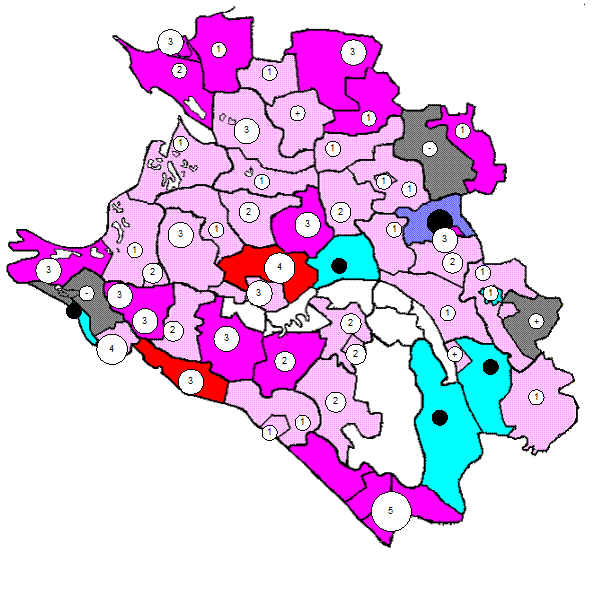Key sociolinguistics procedures and studies
Sociolinguistics should encompass everything from considering ‘who speaks (or writes) what language (or what language variety) to whom and when and to what end’ (Joshua Fishman), that is, the social distribution of linguistic items, to considering how a particular linguistic variable (see above) might relate to the formulation of a specific grammatical rule in a particular language or dialect, and even to the processes through which languages change. Whatever sociolinguistics is, it must be oriented toward both data and theory: that is, any conclusions arrived at must be solidly based on evidence. Above all, the research must be motivated by questions that can be answered in an approved scientific way. In other words, those who seek to investigate the possible relationships between language and society must have a twofold concern: they must ask good questions, and they must find the right kinds of data that bear on those questions. There is a wide variety of questions and data in sociolinguistics: correlational studies, which attempt to relate two or more variables (e.g., certain linguistic usages to social-class differences); implicational studies, which suggest that if X, then Y (e.g., if someone says tess for tests, does he or she also say bes’ for best?); microlinguistic studies, which typically focus on very specific linguistic items or individual differences and uses and seek possibly wide-ranging linguistic and/or social implications (e.g., the distribution of singing and singin’);
other studies, which try to arrive at generalizations about certain universal characteristics of human communication, e.g., studies of conversational structure. 1.5.2. Bell’s principles of sociolinuguistic investigation As part of an attempt to work out a set of principles, or axioms, which sociolinguistic investigations should follow, Roger T. Bell, drawing extensively on the work of Labov, has suggested eight as worthy of consideration: 1. The cumulative principle. The more that we know about language, the more we can find out about it, and we should not be surprised if our search for new knowledge takes us into new areas of study and into areas in which scholars from other disciplines are already working. 2. The uniformation principle. The linguistic processes which we observe to be taking place around us are the same as those which have operated in the past, so that there can be no clean break between synchronic (i.e., descriptive and contemporary) matters and diachronic (i.e., historical) ones. 3. The principle of convergence. The value of new data for confirming or interpreting old findings is directly proportional to the differences in the ways in which the new data are gathered; particularly useful are linguistic data gathered through procedures needed in other areas of scientific investigation. 4. The principle of subordinate shift. When speakers of a non-standard (or subordinate) variety of language, e.g., a dialect, are asked direct questions about that variety, their responses will shift in an irregular way toward or away from the standard (or superordinate) variety, e.g., the standard language, so enabling investigators to collect valuable evidence concerning such matters as varieties, norms, and change. 5. The principle of style-shifting. There are no ‘single-style’ speakers of a language, because each individual controls and uses a variety of linguistic styles and no one speaks in exactly the same way in all circumstances. 6. The principle of attention. ‘Styles’ of speech can be ordered along a single dimension measured by the amount of attention speakers are giving to their speech, so that the more ‘aware’ they are of what they are saying, the more ‘formal’ the style will be. 7. The vernacular principle. The style which is most regular in its structure and in its relation to the history of the language is the vernacular, that relaxed, spoken style in which the least conscious attention is being paid to speech. 8. The principle of formality. Any systematic observation of speech defines a context in which some conscious attention will be paid to that speech, so that it will be difficult, without great ingenuity, to observe the genuine ‘vernacular.’ 1.5.3. The observer’s paradox The last principle accounts for what Labov has called the ‘observer’s paradox.’ He points out (1972b, pp. 209–10) that the aim of linguistic research is to find out how people talk when they are not being systematically observed, but the data are available only through systematic observation. Somehow speakers must have their attention diverted away from the fact that they are being observed so that the vernacular can emerge. This can happen when speakers become emotional. Labov found that a question like ‘Have you been in a situation where you were in serious danger of being killed?’ nearly always produces a shift of style away from careful speech toward the vernacular, thus providing the linguist with the kinds of data being sought. The above principles are fundamental to studies in language variation. Other kinds of studies will require other kinds of principles
|

 macrolinguistic studies, which examine large amounts of language data to draw broad conclusions about group relationships (e.g., choices made in language planning);
macrolinguistic studies, which examine large amounts of language data to draw broad conclusions about group relationships (e.g., choices made in language planning);


